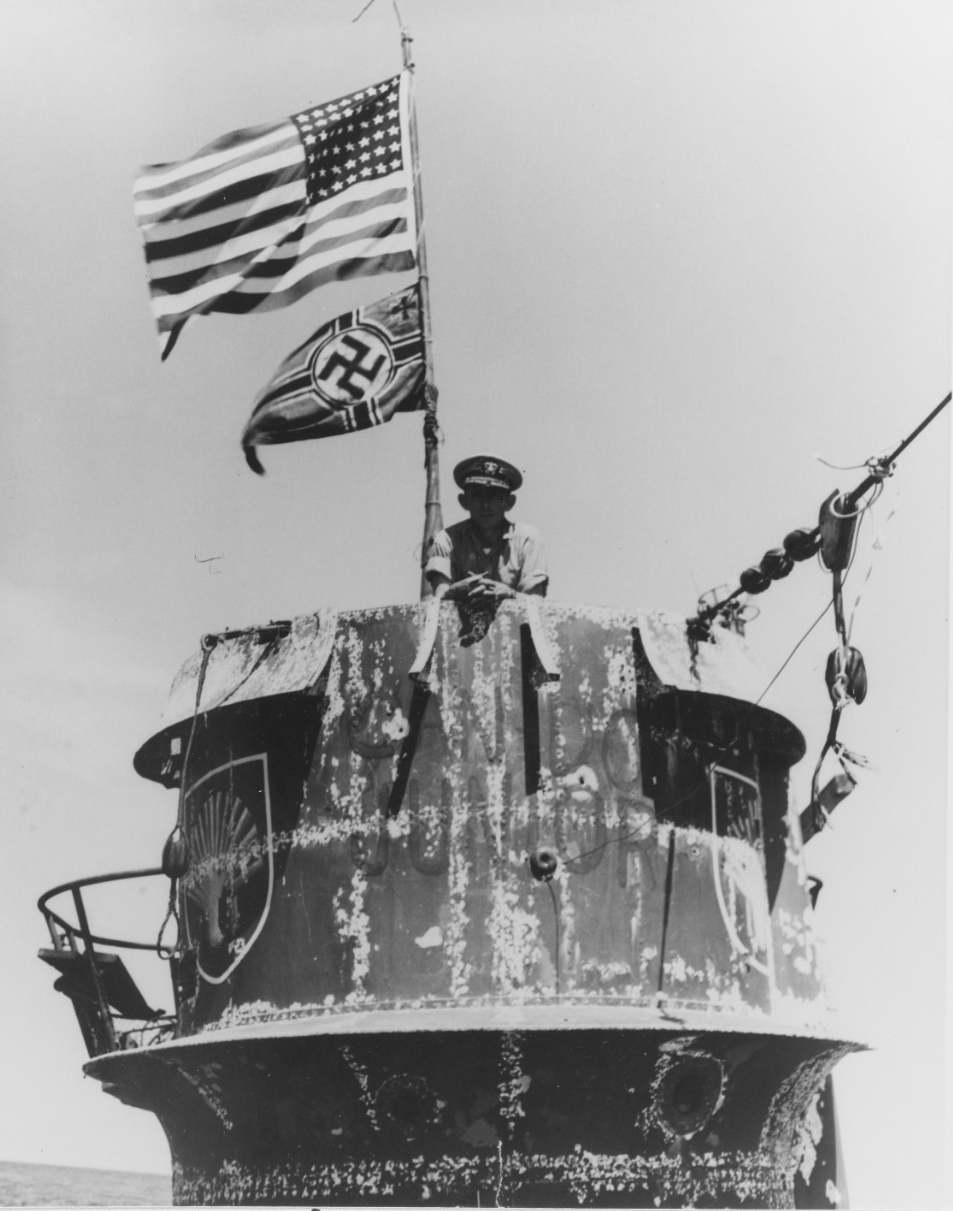Defeating the Sharks: The Capture of U-505
4 June 1944
On 4 June 1944, a U.S. Navy hunter-killer group organized around USS Guadalcanal (CVE-60) captured the German Type IXC submarine U-505. This was the first time that the U.S. Navy had captured an enemy vessel at sea since the 19th century.
The Navy task group was commanded by Captain Daniel V. Gallery, USN, of Guadalcanal, and was comprised of the escort carrier and five destroyer escorts: Pillsbury (DE-133), Pope (DE-134), Flaherty (DE-135), Chatelain (DE-149), and Jenks (DE-665).
The action took place in the Atlantic, approximately 150 miles off the coast of Rio De Oro in Western Sahara, Africa. U-505 was detected by sonar and, after depth-charge attacks by Chatelain in which the submarine’s rudder was jammed, its auxiliary rudder controls disabled, and aft compartments were flooded, the boat surfaced and was taken under naval gunfire. Convinced that the submarine was about to sink, the commanding officer, Oberleutnant zur See (Lieutenant) Harald Lange, ordered his crew to abandon ship, during which the standard scuttling procedures were only partially carried out. As its crew was being picked up, U-505 was boarded by U.S. Navy personnel from Pillsbury led by Lieutenant Junior Grade Albert L. David, who secured sensitive materials and succeeded in closing scuttling valves and disarming scuttling charges (David was later awarded the Medal of Honor for the intrepidity and gallantry of his actions). Flooding was contained and the submarine’s diesel engines shut down. U-505 was taken into tow and, after a concerted damage control effort that eventually succeeded in recharging the boat’s batteries and bringing it to its proper trim, was brought into Bermuda on 19 June.
Despite the immense intelligence value of the recovered classified publications, codebooks, an Enigma cipher machine with up-to-date cipher rotors, and communications equipment, the relatively visible salvage of the submarine was controversial within U.S. Navy circles at the time. U-505 was one of six U-boats captured by the Allies during World War II. Any indication to the Germans that any of their submarines had been captured rather than lost would have set back or even negated vital Allied codebreaking activities.
After the war and following many detours, U-505 eventually found its final resting place at the Chicago Museum of Science and Industry, where the boat was painstakingly restored. It was designated a National Historic Landmark in 1989 and is one of only two Type IXC U-boats still in existence.
—Carsten Fries, NHHC Communition and Outreach Division, May 2019
For Further Reading
Blair, Clair, Hitler’s U-Boat War, Vol. 1: The Hunters, 1939–1942, and Vol. 2: The Hunted, 1942–1945. New York: Random House, Inc., 1996 and 1998.
Morison, Samuel Eliot. History of the U.S. Navy in World War II, Vol. X: Battle of the Atlantic Won, May 1943–May 1945. Boston: Little, Brown and Company, 1956.
Other NHHC U-505 Resources
Imagery of U-505's Capture and Salvage
Recollections of Captain Daniel V. Gallery, USN
Medal of Honor Citation: Lieutenant Junior Grade Albert LeRoy David, USN
German U-Boat Casualties in World War II
NHHC Battle of the Atlantic Links
Battle of the Atlantic: Countering the U-Boat Threat and Supplying the Allies



